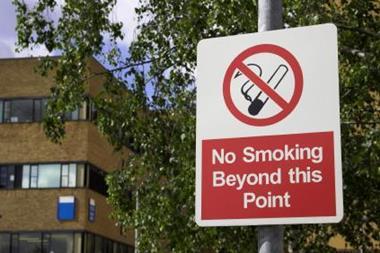The Combined Code may offer larger firms the required guidance on corporate governance, but how can SMEs ensure their obligations are met?
Brokers need to be aware of what good corporate governance means for their business. Most will say it means having a well-managed and well-controlled firm. The FSA takes the same view, and sees it as an overarching requirement if other regulatory outcomes are to be achieved by a firm.
But how do you demonstrate good corporate governance? What does it mean in practice, and what would the FSA expect to see when it visits?
Accountancy firm Littlejohn has been involved in a series of corporate governance remedial projects that have been triggered by FSA Arrow (Advanced, Risk-Responsive Operating frameWork) visits. Generally, the remedial measures have required the firm concerned to produce a lot more documentation surrounding governance processes, and sometimes there have been fundamental changes to the structure of the business. In all cases, a lot of time has been spent, and enormous costs incurred, getting consultants or internal audit teams to carry out work.
What is frustrating for these firms is that, in most cases, they are generally well-managed businesses, but they were not able to demonstrate that.
Keeping tabs
Firms know what they need to do to demonstrate good corporate governance – they need to keep records. There is often a strong push back from business-winning brokers and underwriters against further bureaucracy, however, which means that senior management are left in a quandary: do they insist on more record keeping and risk unhappy business-winners? We saw many cases where firms had started producing some good documentation that were later abandoned. As ever with documentation, the key is: “Don’t initiate a procedure unless you are going to keep it going.”
The frustration gets worse following an Arrow visit, as most firms had the remedial measures from the FSA on a mental list of things to do, but didn’t. Another frustration is that, often, companies can’t see why the FSA doesn’t understand the way something works. We found that, when we went into firms afterwards, we were also not able to quite understand things. Comments such as: “Everyone here knows how it works”, were widely used. So, when considering control and governance-type issues, it is helpful to ask: “Would a third party be able to understand what is happening?”
In terms of guidance, for larger companies there is the Combined Code, which sets out the standards of good practice in relation to non-executive directors, remuneration, accountability and audit, and relations with shareholders. For smaller firms, however, the same requirements are onerous and clearly disproportional. So where should these companies begin?
The checklist
Based on our experience, the following measures describe some, though certainly not all, examples of what small and medium-sized firms might consider doing to be able to execute and demonstrate effective corporate governance.
To some extent, the complexity of the firm is more important than the size. When we asked 15 brokers at a breakfast forum the question: “What size is a small broker?”, we got 15 different answers. So directors should really ignore the size aspect and ask themselves: “Am I comfortable that I’m able to manage and control the business? Do I really know what is happening?”
1) Manage the business
Companies need to set out their business objectives. This might be as simple as documenting them or, for medium-sized firms, building a detailed business plan. These should be agreed by the board and communicated to the firm.
Firms should document their key procedures and keep that documentation up to date to reflect what actually happens in the business.
They should ensure that their management information is timely and allows senior managers to fully understand all aspects of the business. This information should include regulatory and good governance measures and outcomes, not just be focused on profit or volume.
In order for management and staff to understand their roles, they should have clear job descriptions that allow them to understand their responsibilities. In all cases, the individual should have the skills to perform the role.
In the case of medium-sized companies, all key meetings of boards or committees should be minuted. Where actions are required, these should be captured and performance of those actions monitored. Each committee or board should have a terms of reference, setting out their responsibilities and the extent of their decision-making authority. These responsibilities should be developed alongside an organogram.
In medium-sized companies, the board should possess a balance of skills, and the firm’s training regime should apply to all members of the board.
2) Ensure transparency in remuneration
Small and medium-sized brokers should align staff remuneration with performance, and the basis of measurement should be communicated to staff. Performance measures should be aligned to good governance outcomes, not just based on profit or volume. Non-executive directors should meet to discuss the remuneration of executive management.
3) Set up risk controls
Generally, companies should have a well-understood set of controls that addresses the risks facing the business. There should be good segregation of duties and checking procedures to ensure that the controls are working.
Key controls should be captured in the procedures manual and, for medium-sized firms, in the risk register. The performance of key controls should be evidenced and evidence kept. This might be as simple as putting a signature on a document.
For smaller firms, it might be appropriate to get co-workers to cross-check each other’s work or to carry out role rotation. In medium-sized firms, the testing of controls should be part of a well-defined programme of internal audit work that has been formally agreed by the audit committee. The internal audit team needs an open line of communication to the audit committee.
4) Establish accountability
Individuals need to know what they are supposed to be doing. Their decisions need to be constructively challenged. There also needs to be a way to check that they are performing.
In medium-sized organisations, as mentioned before, key decisions and action points should be minuted. These can be used later in appraisals and to assess how the business has performed. Management information should be sufficient to allow managers to understand how the company is achieving against the business plan.
In addition, non-execs should critically appraise the executive directors and provide constructive challenge in their decision-making processes. IT
John Needham is a partner with accountancy firm Littlejohn LLP
Useful links
The Combined Code on Corporate Governance: www.frc.org.uk/corporate/combinedcode.cfm
How the FSA monitors and regulates firms through the Arrow framework: www.fsa.gov.uk/pages/Doing/Regulated/supervise/index.shtml
Hosted by comedian and actor Tom Allen, 34 Gold, 23 Silver and 22 Bronze awards were handed out across an amazing 34 categories recognising brilliance and innovation right across the breadth of UK general insurance.














































No comments yet